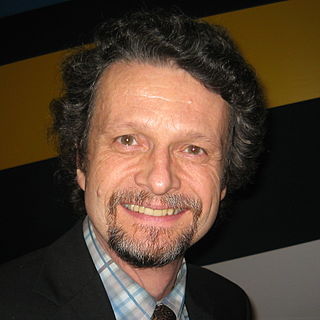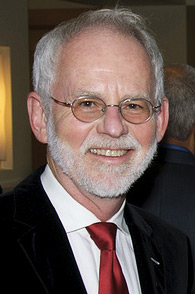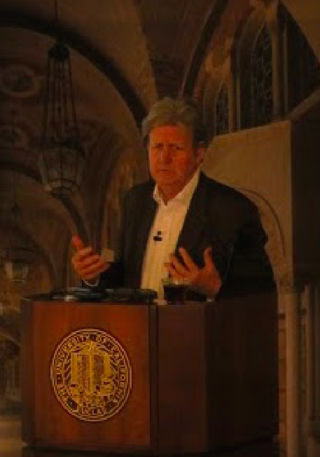Related Research Articles

PARC is a research and development company in Palo Alto, California. Founded in 1969 by Jacob E. "Jack" Goldman, chief scientist of Xerox Corporation, the company was originally a division of Xerox, tasked with creating computer technology-related products and hardware systems.

Butler W. Lampson, ForMemRS, is an American computer scientist best known for his contributions to the development and implementation of distributed personal computing.

The Xerox Alto is a computer designed from its inception to support an operating system based on a graphical user interface (GUI), later using the desktop metaphor. The first machines were introduced on 1 March 1973, a decade before mass-market GUI machines became available.
Situated learning is a theory that explains an individual's acquisition of professional skills and includes research on apprenticeship into how legitimate peripheral participation leads to membership in a community of practice. Situated learning "takes as its focus the relationship between learning and the social situation in which it occurs".

Stanford Research Park (SRP) is a technology park established in 1951 as a joint initiative between Stanford University and the City of Palo Alto. It was the world's first university research park. It has more than 150 companies, including Hewlett-Packard, Tesla Motors, TIBCO and VMware; previously, it housed high-profile companies, including Steve Jobs's NeXT Computer, Xerox PARC, and Facebook. It has been called "an engine for Silicon Valley" and "the epicenter of Silicon Valley".
Computer Professionals for Social Responsibility (CPSR) was a global organization promoting the responsible use of computer technology. CPSR was incorporated in 1983 following discussions and organizing that began in 1981. It educated policymakers and the public on a wide range of issues. CPSR incubated numerous projects such as Privaterra, the Public Sphere Project, the Electronic Privacy Information Center, the 21st Century Project, the Civil Society Project, and the Computers, Freedom and Privacy Conference. Founded by U.S. computer scientists at Stanford University and Xerox PARC, CPSR had members in over 30 countries on six continents. CPSR was a non-profit 501.c.3 organization registered in California.
Situated cognition is a theory that posits that knowing is inseparable from doing by arguing that all knowledge is situated in activity bound to social, cultural and physical contexts.

Robert William Taylor, known as Bob Taylor, was an American Internet pioneer, who led teams that made major contributions to the personal computer, and other related technologies. He was director of ARPA's Information Processing Techniques Office from 1965 through 1969, founder and later manager of Xerox PARC's Computer Science Laboratory from 1970 through 1983, and founder and manager of Digital Equipment Corporation's Systems Research Center until 1996.
George E. Pake was a physicist and research executive primarily known for helping founded Xerox PARC.
Learning sciences (LS) is an interdisciplinary field that works to further scientific, humanistic, and critical theoretical understanding of learning as well as to engage in the design and implementation of learning innovations, and the improvement of instructional methodologies. LS research traditionally focuses on cognitive-psychological, social-psychological, cultural-psychological and critical theoretical foundations of human learning, as well as practical design of learning environments. Major contributing fields include cognitive science, computer science, educational psychology, anthropology, and applied linguistics. Over the past decade, researchers have expanded their focus to include the design of curricula, informal learning environments, instructional methods, and policy innovations.

Charles Patrick "Chuck" Thacker was an American pioneer computer designer. He designed the Xerox Alto, which is the first computer that used a mouse-driven graphical user interface (GUI).

Étienne Charles Wenger is an educational theorist and practitioner, best known for his formulation of the theory of situated cognition and his more recent work in the field of communities of practice.

Lucy Suchman is Professor Emerita of Anthropology of Science and Technology in the Department of Sociology at Lancaster University, in the United Kingdom, also known for her work at Xerox PARC in the 1980s and 90s.

Roy D. Pea is David Jacks Professor of Learning Sciences and Education at the Stanford Graduate School of Education. He has extensively published works in the field of the Learning Sciences and on learning technology design and made significant contributions since 1981 to the understanding of how people learn with technology.
A community of practice (CoP) is a group of people who "share a concern or a passion for something they do and learn how to do it better as they interact regularly". The concept was first proposed by cognitive anthropologist Jean Lave and educational theorist Etienne Wenger in their 1991 book Situated Learning. Wenger then significantly expanded on the concept in his 1998 book Communities of Practice.
Robert J. Spinrad was an American computer designer, who was on the staff of Brookhaven National Laboratory and who created many of the key technologies used in modern personal computers while director of the Xerox Palo Alto Research Center.
William J. Clancey is a computer scientist who specializes in cognitive science and artificial intelligence. He has worked in computing in a wide range of sectors, including medicine, education, and finance, and had performed research that brings together cognitive and social science to study work practices and examine the design of agent systems. Clancey has been described as having developed “some of the earliest artificial intelligence programs for explanation, the critiquing method of consultation, tutorial discourse, and student modeling,” and his research has been described as including “work practice modeling, distributed multiagent systems, and the ethnography of field science.” He has also participated in Mars Exploration Rover mission operations, “simulation of a day-in-the-life of the ISS, knowledge management for future launch vehicles, and developing flight systems that make automation more transparent.” Clancey’s work on "heuristic classification" and "model construction operators" is regarded as having been influential in the design of expert systems and instructional programs.

Christian Heath is Professor of Work and Interaction at King's College London. He is known for his research in which he uses video to analyse social interaction in everyday settings in particular the workplace.

William Maxwell Newman was a British computer scientist. With others at the Xerox Palo Alto Research Center in the 1970s Newman demonstrated the advantages of the raster display technology first deployed in the Xerox Alto personal workstation, developing interactive programs for producing illustrations and drawings. With Bob Sproull he co-authored the first major textbook on interactive computer graphics.
Brigitte Jordan was a German-American professor, scientist, and consultant who was described as the midwife to the "Anthropology of Birth". She attended Sacramento State College where she received her bachelor's and master's degrees, and later attended the University of California, Irvine where she completed her PhD.
References
- ↑ Fried, Ina (March 10, 2004). "PARC founder George Pake dies". cnet . Retrieved 30 December 2009.
- ↑ Wenger, E. (1998) Communities of practice: learning, meaning, and identity. New York: Cambridge University Press.
- ↑ Lave, J. and Wenger, E. (1991) Situated learning: legitimate peripheral participation. New York: Cambridge University Press.